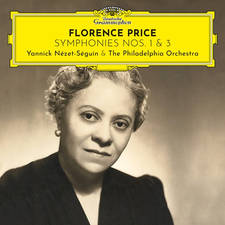The Romantic symphony: a guide
By the end of the Romantic period, the sensible forms and the delicate order of the Classical period had given way to almost incomprehensibly large orchestral forces, as music became the vehicle to express even the most complex of emotions. But how did symphonies move from Mozart to Mahler in the space of 100 years? Journey through the Romantic symphony with our helpful guide.
Despite being known as a Classical period composer, Beethoven's music broke the mould championed by Haydn and Mozart – his symphonies shook the already highly-esteemed genre to become highest form of expression in all music. Even in the opening chords of his Symphony No. 1, Beethoven proves he's not your average symphonic composer by starting the music in the wrong key. By the time he wrote his Symphony No. 6 in 1808, he was ahead of his time in taking inspiration from the countryside, and the vast choral, orchestral and solo forces in his Symphony No. 9 set the precedent for his later Romantic counterparts.
It's this boundary-breaking attitude that kick-started the Romantic symphony's journey – and boundaries were indeed broken in every way. The ominous opening of Schubert's Symphony No. 8 ('Unfinished'), combined with its uneven phrase lengths, surprising chords and rhythmic changes is a sign of what's to come. Berlioz's Symphonie Fantastique goes one step further, telling a tragic love story through a Witches' Sabbath, Ball, and even a beheading in March to the Scaffold. Berlioz, a stickler for detail, even included a musical representation of the decapitated head falling to the floor – so we've come a long way since Mozart's sensible symphonies!
Once composers had harnessed music's power to express almost anything, the symphonic floodgates opened. Tchaikovsky used this to his advantage in his six symphonies, each one packed with emotion, especially in the chilling Symphony No. 5 and the poignant 'Pathétique'. Brahms, too, took up the symphonic form, injecting his four efforts in the genre with as many dramatic moments as memorable melodies. His Symphony No. 4 makes use of another helpful Romantic trend: a larger orchestra, in Brahms' case featuring a piccolo, a contrabassoon, and a triangle for added excitement. And let's not forget Dvořák, whose Symphony No. 9 paid homage to Beethoven's, even using some of the same musical material.
It's not just Dvořák who took inspiration from Beethoven. Mahler followed his example and generally super-sized the symphony. The clue's in the title of his 'Symphony of a Thousand', No. 8, so-called due to its large number of performers. His Symphony No. 2, 'Resurrection' is also an epic example of the genre, with the final movement lasting around 40 minutes, and a final chord lasting almost 40 seconds. Again, the title's a clue as to just how all-encompassing Mahler's symphonies were – embodying life, death, heaven, hell, and everything in between.
So, where the Classical period symphony established firm rules and musical boundaries, the Romantics mercilessly and unapologetically smashed almost every single one. And never before has smashing sounded so good.






















